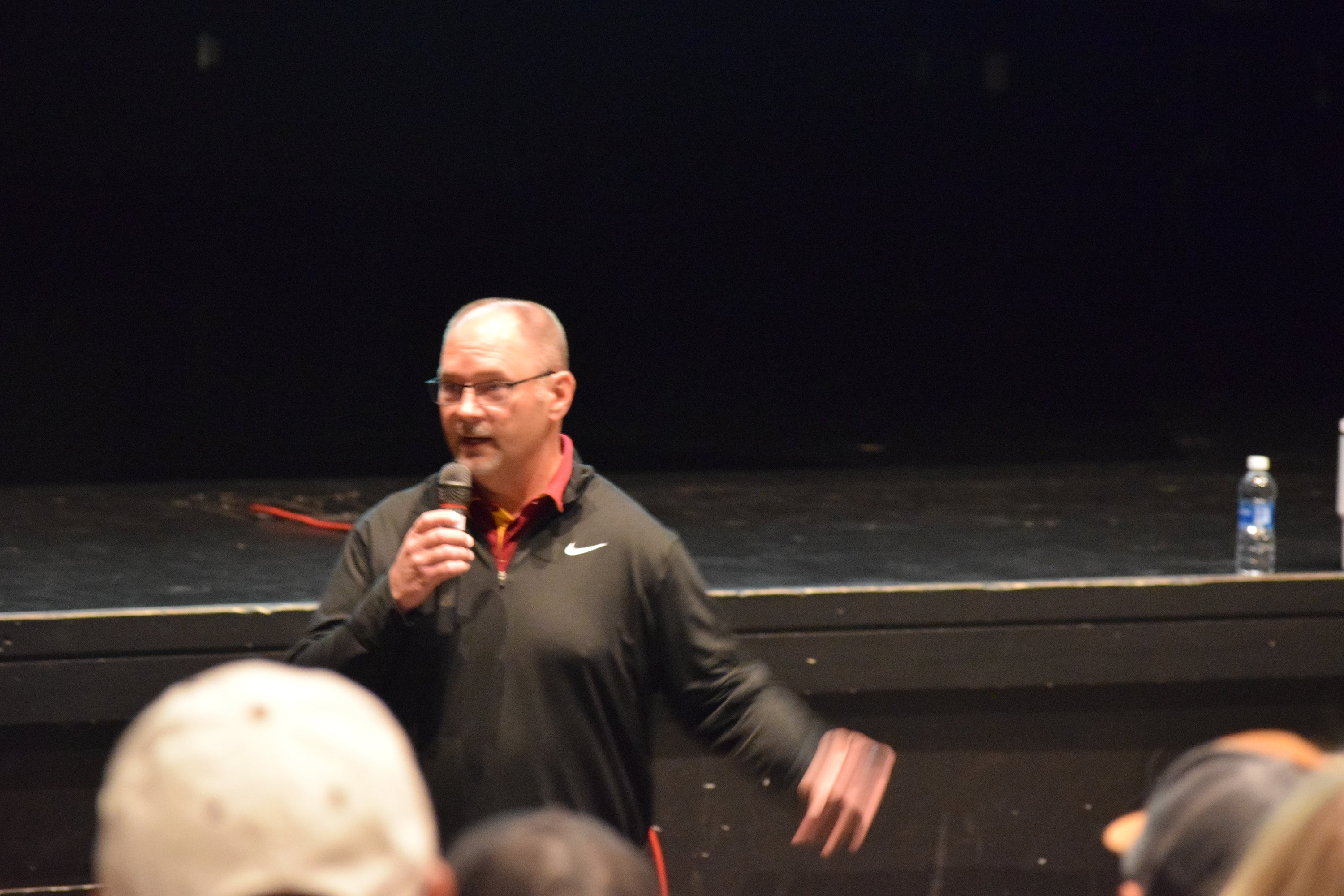MLSD seeks help to provide extracurriculars in ‘24-25 school year
MOSES LAKE — The Moses Lake School District hosted a meeting Monday night to get community members’ input on how the district might fund sports and other extracurricular activities given the school district’s financial situation.
In response to questions from the audience, Interim MLSD Superintendent Carol Lewis said that, without the community doing some sort of fundraising, the district will not have a way to have athletics or other activities, like theater.
“I mean, I would be being dishonest with you if I said, ‘Yeah. I think there’s a way right now that we can come up with money to fund athletics and activities,’ and that’s why we’re here,” Lewis said.
Lewis and MLSD Athletic Director Loren Sandhop explained that, due to the schools' educational programs and operations levy failing twice earlier this year, the district would not have levy funding available to pay for students to participate in sports or other activities. However, both said they saw those extracurriculars as vital to students’ wellbeing. The soft skills learned during football or theater or on the math team round out a student’s education. However, without levy funding, the sports programs have no money available, especially given escalated costs with inflation and lack of resources such as sufficient bus drivers to take students to events.
Lack of bus drivers alone, Sandhop said, takes an expense that could come in at roughly $800 per bus with an MLSD driver and makes it so the same trip for a football game or a band trip costs about $4,000 per bus.
“They send three buses out of town. Three buses that are $4,000 per charter. That’s 12,000 bucks to send our band somewhere. So, it all adds up in a hurry,” Sandhop said.
Without the levy money coming in after the turn of the calendar year, Sandhop said there is no money for extracurriculars. Without the levy, even teacher positions had to be cut.
“The amount of money that comes from Olympia is not enough,” he said.
Community members presented several ideas to allow business owners and the general public to donate to ensure students can still participate in activities. However, they also expressed concerns about a lack of trust after MLSD found millions of dollars in accounting errors that left it without any reserves to fund sports and activities, among other issues.
While the district will receive some funds this fall from the previous levy, that money will need to go toward the district’s primary mission of educating students, Lewis said. It won’t be available for sports.
Sandhop said the district needs to raise about $2.3 million to cover its athletic and activities budget for the 2024-25 school year. That includes coaching stipends and benefits, transportation, pool maintenance and upgrades, equipment and uniforms, officials for events such as referees, coaching substitutes, various contracted services such as police and portable toilets, game management, event staff and post-season hotels for students who make it to state or regional competitions. The funding would support 70 competitive high school teams and 104 teams at the middle school level.
However, both Sandhop and Lewis said they needed the input of the community members they’d assembled to help brainstorm solutions, not only to get the funding but to prioritize sports and activities given possible shortfalls of funding from the community.
While attendees expressed a willingness to help ensure students could participate in extracurriculars, they said they had concerns about handing funding over to MLSD after recent budgetary issues came to light. They requested more specific numbers than the school district was able to provide, such as a per-student cost for each activity at various levels such as varsity only, a reduced number of activities or other options.
“It needs to be the booster club, or a booster club-related thing that the school can bill them as a reimbursement from …” an attendee said. “You’ve already lost the trust. In order to build that trust and to build these programs, this is information we need to have.”
Suggestions did come in from attendees, including parents transporting students to games and other events, having funding goals at different tiers of service the district would be able to provide through community fundraising outside of a levy and increased rates for community use of facilities like the Moses Lake High School theater and pool.
Lewis said she appreciated the ideas presented by the attendees and hoped that those ideas would bear fruit. However, the district did have limitations, she said. Even with donated funds, the district is required under the law to provide equitable access for all demographics it serves. As a result, money cannot be donated solely for football or expressly for theater or math club. The money would have to be spread to fund as many activities as possible. Pay-to-play plans would still have to allow low-income students — the district is about 60% eligible for free or reduced meals — to participate in sports and activities.
Pay for staff to keep those programs going has to be equitable as well, Sandhop said.
“That way we don’t pay a girls basketball coach $50,000 and a boys basketball coach $5,000,” he said as an example. “We have to have some equity to it, or a reason why we’re paying less.”



